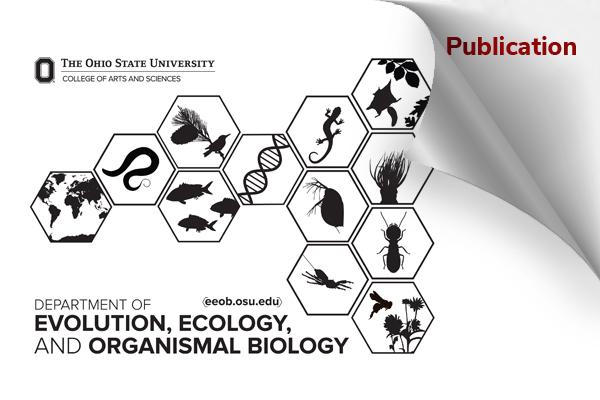EEOB Publication - Sivakoff

Vegetation biomass and landscape context influence web-building spider dietary breadth in urban vacant lots
Ellen Danford, Yvan A. Delgado de la flor, Nicole Hoekstra, Rodney Richardson, Frances Sivakoff, Mary Gardiner. 2025. Ecological Entomology. DOI: 10.1111/een.70022
Abstract
Legacy cities often encompass large numbers of vacant land parcels that can be managed as greenspace to promote biodiversity and provision ecosystem services. Understanding the forces that shape arthropod predator communities within urban greenspaces is key to advancing sustainable landscaping programs targeted at promoting biodiversity. Our aim was to understand how the frequency of mowing and the extent of landscape fragmentation surrounding a vacant lot habitat influenced predator diets and shaped predator communities.
We focused on a group of small web-building spiders, as their dispersal success can be influenced by landscape variables, and their establishment is sensitive to local management intensity. We hypothesized that reduced landscape fragmentation and mowing frequency would sustain a species-rich and abundant community of these generalist predators by supporting a high dietary niche breadth and reducing exploitative competition, measured as dietary niche overlap.
We found significant dietary niche partitioning among the spider species studied. We found support for our hypothesis that managing vacant lots with less frequent mowing results in a greater dietary niche breadth for web-building spiders. Interestingly, at the landscape scale, dietary niche breadth was positively associated with impervious surface, which did not support our hypothesis. A higher spider dietary breadth and reduced dietary overlap within a sampled spider community were not positively associated with spider activity density or species richness within a habitat patch, as we predicted.
Our findings suggest that reducing the mowing frequency of vacant lots could improve their habitat quality for spiders by supporting diverse and abundant prey. However, humans are unlikely to accept infrequently mown vacant lots, as these sites are often viewed as overgrown and messy by residents. Working with residents to green their occupied residential parcels is another option to add vegetation biomass and complexity for biodiversity in legacy cities. For instance, adding well-maintained gardens, shrubs and trees can improve arthropod habitat quality while also meeting the expectations for urban landscape appearance held by many.
